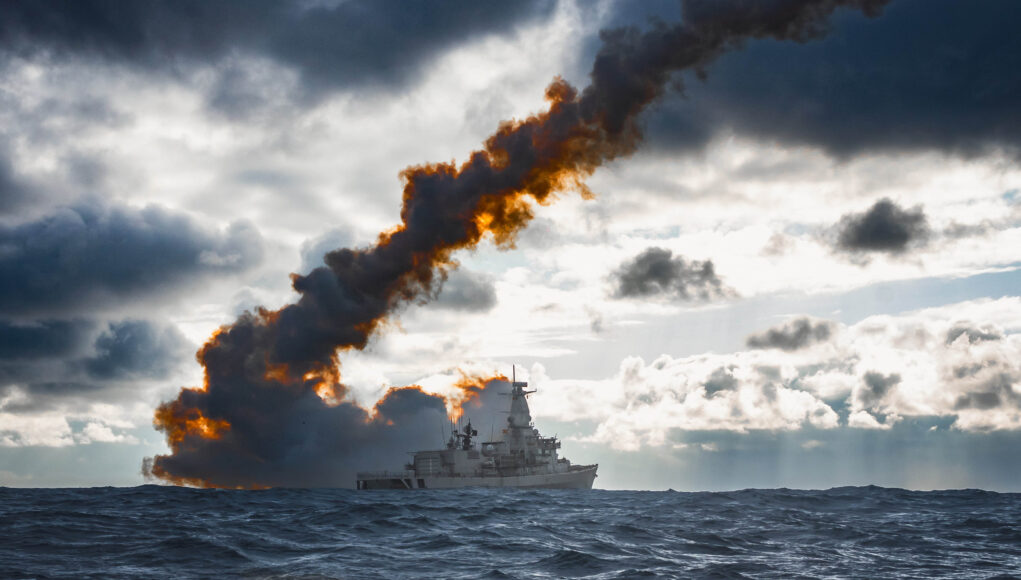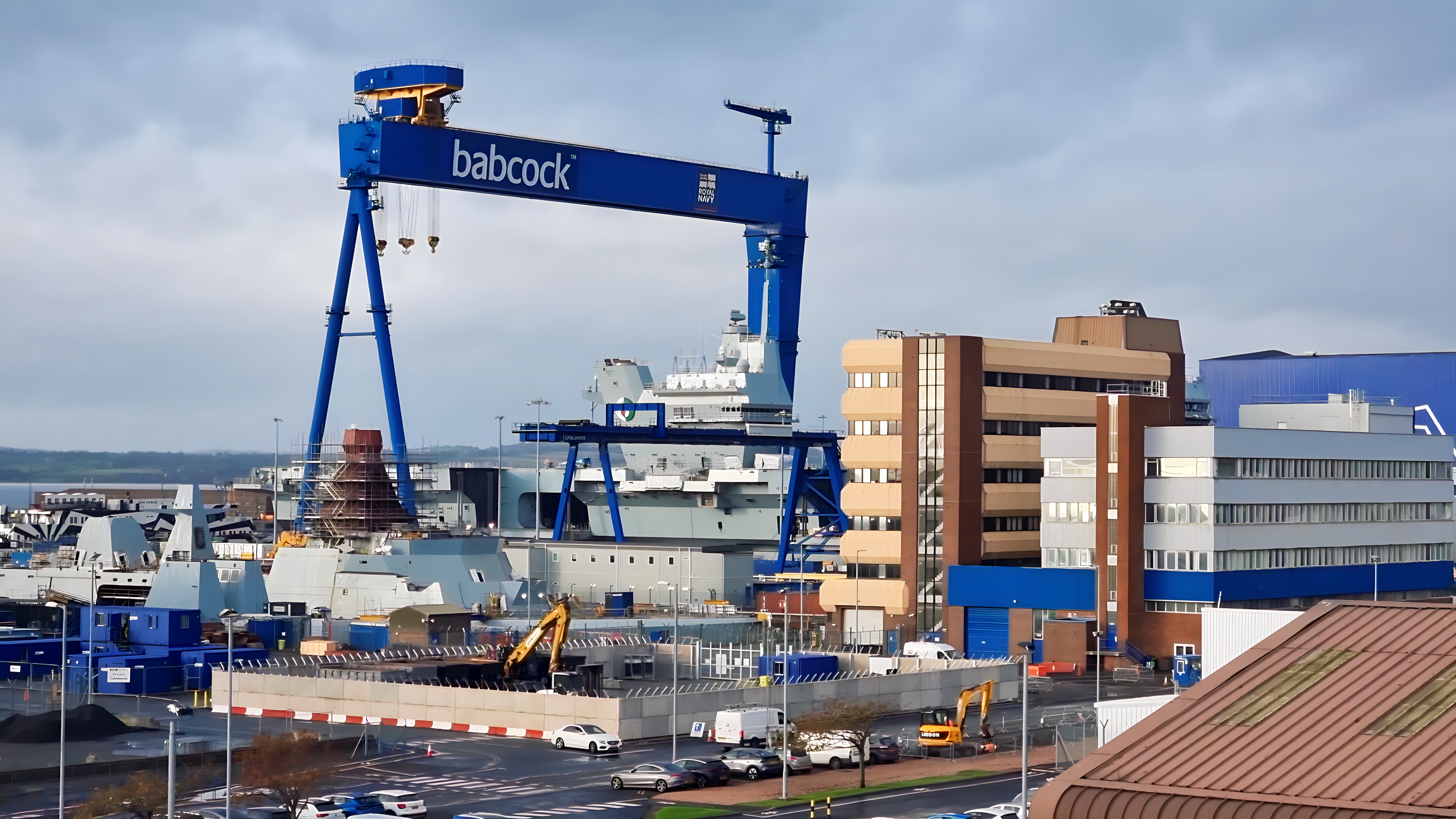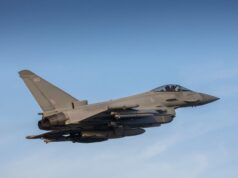Dramatic images have emerged from NATO’s Formidable Shield 2025 exercise, showcasing live missile launches over the waters off Scotland.
The visuals, shared by NATO’s Joint Force Command Norfolk, depict missiles streaking skyward, leaving trails of smoke as they engage targets.
Formidable Shield 2025, running from May 1 to 31, is NATO’s premier live-fire training exercise, designed to test and enhance integrated air and missile defence capabilities. Conducted every two years, it brings together naval, air, and land units from multiple allied nations.
Real missiles, real targets, real readiness. 11 @NATO Allies operating together in @USNavyEurope‘s and @STRIKFORNATO‘s #FormidableShield25 the most complex live missile fire event of the year.
Firing units here are from 🇬🇧 🇧🇪🇨🇦🇫🇷 #StrongerTogether pic.twitter.com/AOHAfJNkPi
— NATO JFC Norfolk (@JFCNorfolk) May 20, 2025
The exercise primarily takes place at the QinetiQ-operated Ministry of Defence Hebrides range in Scotland. As the technical lead and primary host, QinetiQ plays a central role in providing the infrastructure, targets, and support essential to the exercise’s success.
A key feature of the exercise is the forward deployment of NATO’s Airborne Warning and Control System (AWACS) to provide command, control, and coordination support. QinetiQ’s role in Formidable Shield is comprehensive, encompassing everything from range management to the provision of aerial and missile targets. The company’s Hebrides range offers a vast, instrumented environment that facilitates realistic simulations, ensuring that every aspect of the exercise is safely and effectively executed.
During a recent media briefing, James Anderson from QinetiQ discussed the scale and complexity of the exercise: “Early next week, we will be delivering clearing 1 million [square kilometres] – something about four, four and a half times the size of the UK.”
Anderson said that the integrated nature of the exercise has increased significantly: “We’re seeing a significant increase in that multi-domain element of the exercise.” This year, Formidable Shield features a more coordinated approach between land, sea, and air assets, reflecting the evolving nature of global threats.
A notable addition this year is the involvement of ground forces. Anderson explained: “The US Army has already fired, using HIMARS systems, marking the first time in 40 years that the US Army has fired anything from the UK.”
QinetiQ’s contributions extend beyond logistical management. The company provides high-tech radar systems, real-time telemetry, and a range of aerial and missile targets. These include subsonic, supersonic, and ballistic missile targets that challenge participating units to respond effectively under realistic conditions. Anderson explained: “We are not just testing individual systems, but their interoperability and how they function as part of an integrated defence network.”
Anderson also noted the critical importance of practising ballistic missile defence (BMD) in a realistic environment, saying: “Formidable Shield is seen as a significant contributor to NATO BMD. There is nowhere else NATO BMD can rehearse, test, and trial the capabilities that we really need to deliver in theatre with the growing threat.”
A key aspect of QinetiQ’s role is ensuring safety across a massive operational area. Anderson described the collaborative efforts required to maintain secure airspace: “That clearance needs to come from P8s from NATO and from the Americans to support that range clearance that we need to do.”
A unique feature of the exercise is the use of ‘trusted agents’ on board ships, who are linked to the safety case and aware of the exact timing of incoming threats. Anderson elaborated: “Most of the ships don’t know when it’s coming. There are trusted agents on board who know and are linked into the safety case. Most of the operational crews, especially those doing full mission rehearsal rather than engineering testing, do not know it’s coming.”














Currently, Europe and the UK do not have tactical nuclear missiles, however, Russia do and will have the advantage for some time to come. During the Cold War, the US and UK had Honest John tactical nuclear weapons launched from modified M113 (I think). There is some disquiet that Russia could use a tactical nuclear weapon outside of the Ukrainian theatre without there being a corresponding response. Use of Triton would immediately result in a ballistic response, which no one wants. The new UK/German long-distance missile announced last week would go some way to neutralise Russia’s current advantage, but how long do we have to wait?
Triton? Trident, perhaps? BTW, recently learned B61-13 gravity bomb (already in production, one yr. ahead of schedule) is slated to be deployed only on USAF bombers. No clue re rationale for aircraft selection.
Britain not having a tactical nuke is not a loss of advantage to Russia. It’s as easy to argue that Britain’s all or nothing response discourages the use of tactical nukes by Russia in the first place, certainly in or near Britain, for fear that a full on nuclear war could be the only result. Russia’s advantage in conventional intermediate cruise and ballistic missiles is a bigger real advantage as they would feel less constrained in using it.
Agree with all or nothing, when does use of tactical stop escalating in the heat of war.
The response should be designed to be proportional, i.e. they lob one at us, we lob one back. If you use the all or nothing approach, then the “all” would also illicit an all response from the ones who initiated the attack. By which point there will be little left! But then what constitutes a tactical nuclear weapon. Would Frances ASMP be considered a tactical nuke? As the warhead it carries is dialable from 100kt to 300kt. Which would be comparable to the retired WE177B and C versions used by the FAA/RAF from Vulcan, Buccaneer, Jaguar and Tornado. The US B61 is comparable with both. Whereas the WE177A had a much smaller 10kt yield, which made it useful for depth charges as well a dropping from tactical aircraft such as Harrier and Jaguar.
France will use their ASMP in a tiered response, with aim of one for one, forcing the other to hopefully take a step back and reconsider their options. France have also said that if a rogue state uses a nuke on them, the ASMP would be their first response. This is something we cannot do. Allegedly there is a Trident equipped with one MIRV. However, its use against a rogue state would be ambiguous as, both Russia and China monitor for a Trident launch. Which could have disastrous consequence if its miscommunicated.
Not what some military commentators are saying, in fact there is a greater likelihood of a strike against the UK due to our lack of tactical missiels.
Strong-man leaders are hard to predict. They may be right, or I may be. Flip a coin.